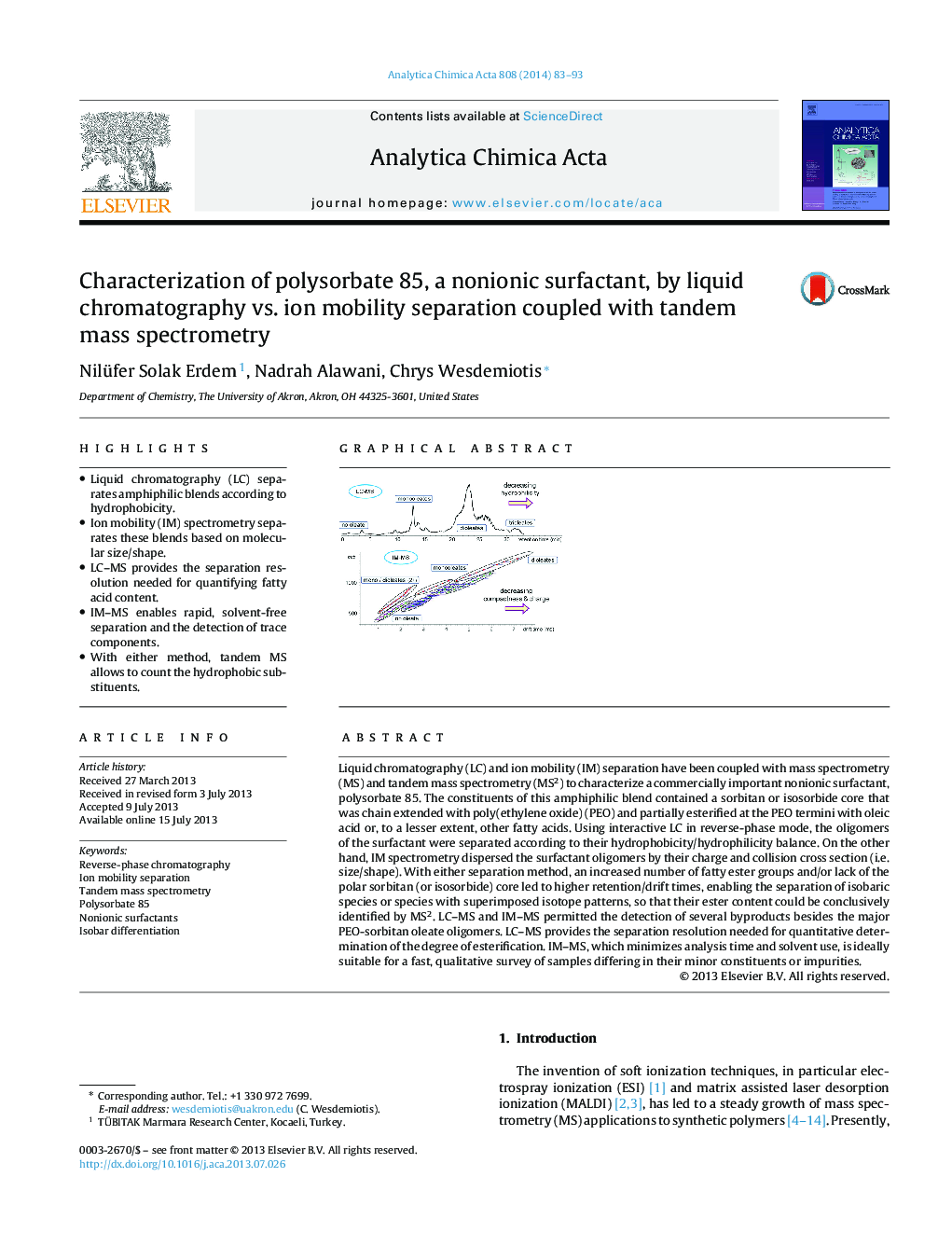| Article ID | Journal | Published Year | Pages | File Type |
|---|---|---|---|---|
| 1164432 | Analytica Chimica Acta | 2014 | 11 Pages |
•Liquid chromatography (LC) separates amphiphilic blends according to hydrophobicity.•Ion mobility (IM) spectrometry separates these blends based on molecular size/shape.•LC–MS provides the separation resolution needed for quantifying fatty acid content.•IM–MS enables rapid, solvent-free separation and the detection of trace components.•With either method, tandem MS allows to count the hydrophobic substituents.
Liquid chromatography (LC) and ion mobility (IM) separation have been coupled with mass spectrometry (MS) and tandem mass spectrometry (MS2) to characterize a commercially important nonionic surfactant, polysorbate 85. The constituents of this amphiphilic blend contained a sorbitan or isosorbide core that was chain extended with poly(ethylene oxide) (PEO) and partially esterified at the PEO termini with oleic acid or, to a lesser extent, other fatty acids. Using interactive LC in reverse-phase mode, the oligomers of the surfactant were separated according to their hydrophobicity/hydrophilicity balance. On the other hand, IM spectrometry dispersed the surfactant oligomers by their charge and collision cross section (i.e. size/shape). With either separation method, an increased number of fatty ester groups and/or lack of the polar sorbitan (or isosorbide) core led to higher retention/drift times, enabling the separation of isobaric species or species with superimposed isotope patterns, so that their ester content could be conclusively identified by MS2. LC–MS and IM–MS permitted the detection of several byproducts besides the major PEO-sorbitan oleate oligomers. LC–MS provides the separation resolution needed for quantitative determination of the degree of esterification. IM–MS, which minimizes analysis time and solvent use, is ideally suitable for a fast, qualitative survey of samples differing in their minor constituents or impurities.
Graphical abstractFigure optionsDownload full-size imageDownload as PowerPoint slide
